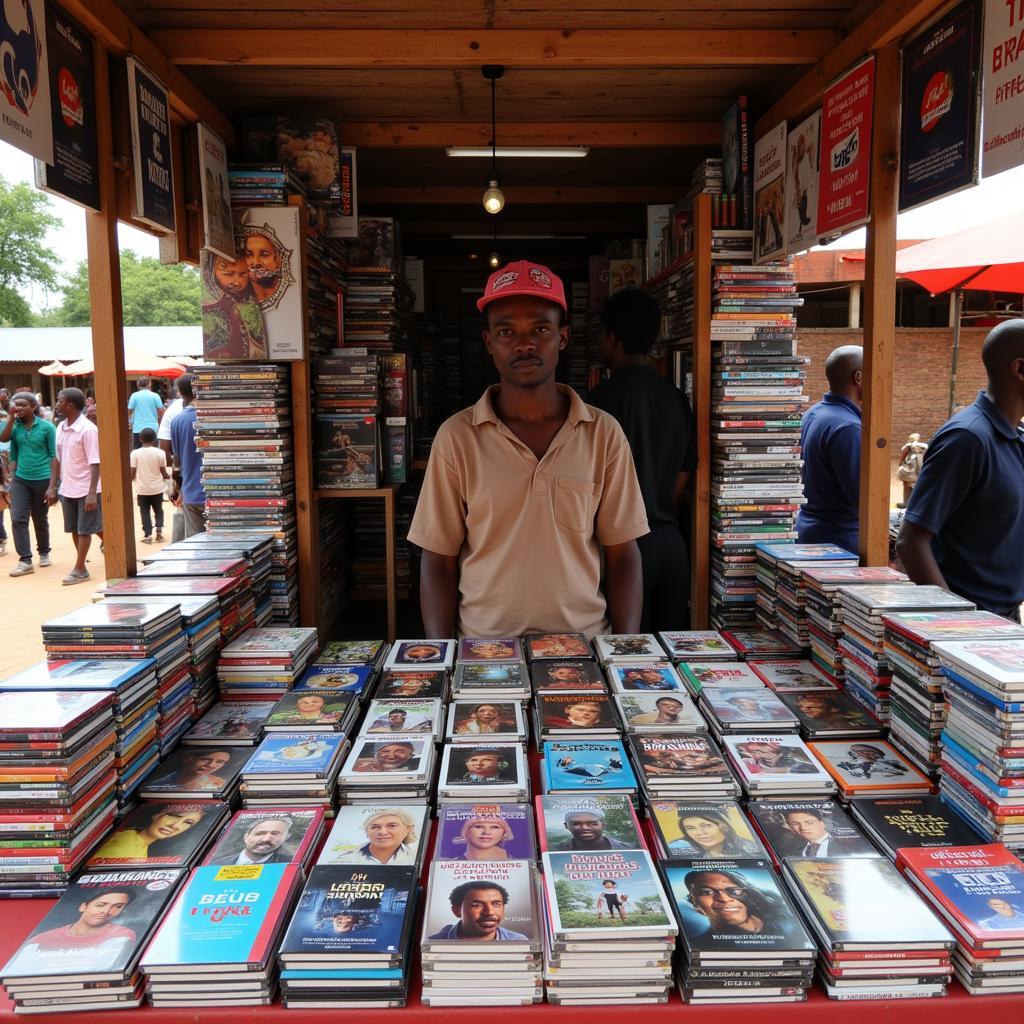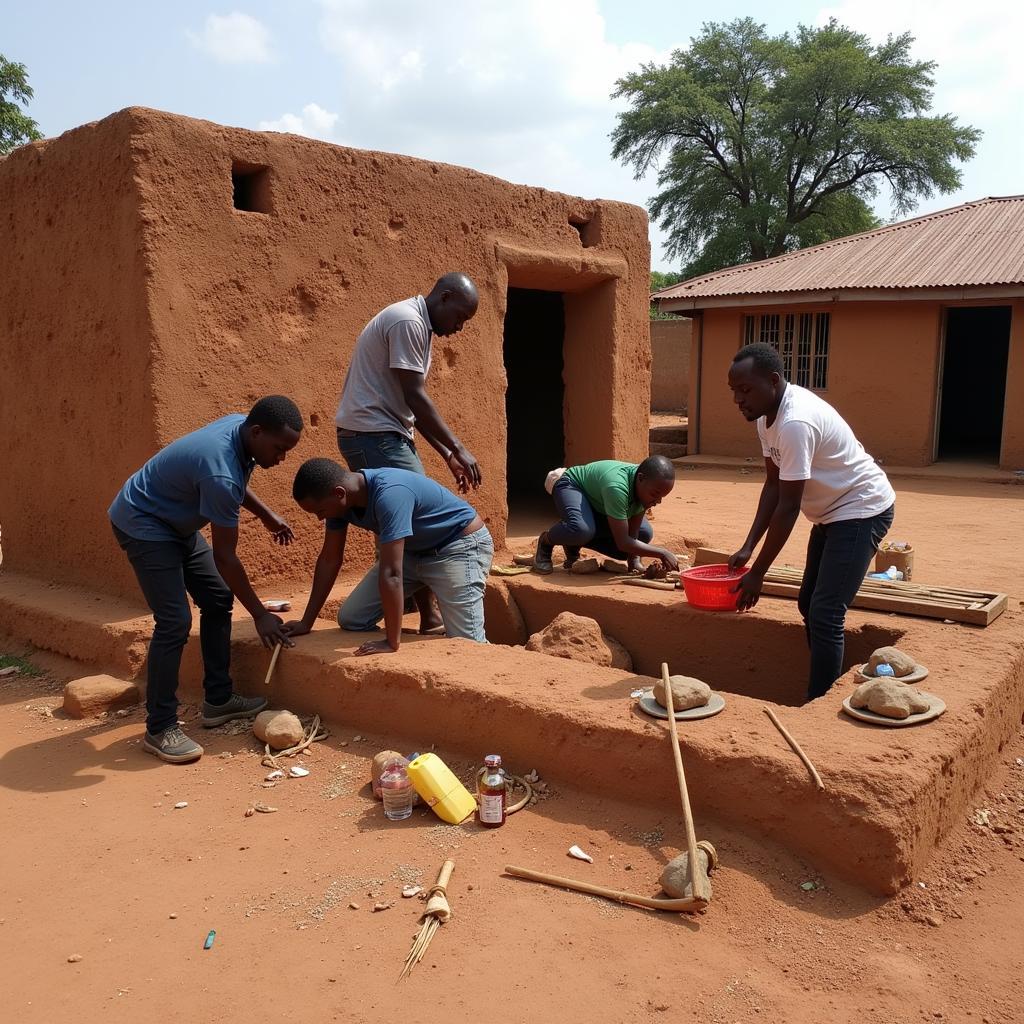Exploring the Vibrant World of African Lace
African Lace is more than just fabric; it’s a vibrant expression of art, culture, and history woven into the very threads of African societies. From traditional ceremonies to modern fashion runways, African lace holds a significant place, representing heritage, status, and exquisite craftsmanship. This intricate fabric tells stories, connecting generations and showcasing the rich diversity of the continent. See how this beautiful textile continues to evolve and inspire.
A Deep Dive into the History of African Lace
African lace has a complex and fascinating history. While the technique of lacemaking originated in Europe, African lace has developed its own unique identity. Early forms of African lace were often handmade, incorporating traditional motifs and patterns that reflected local customs and beliefs. After its introduction by European traders, lace became increasingly popular, and its production evolved to meet the growing demand. Learn more about African Lace Outfits and discover their diverse beauty.
The 20th century saw the rise of industrial lace production, with countries like China becoming major suppliers. This made lace more accessible, further solidifying its place in African fashion and culture. Check out African Lace Manufacturers in China to understand the global impact of this industry.
The Significance of African Lace in Traditional Ceremonies
African lace plays a vital role in traditional ceremonies across the continent. Weddings, funerals, festivals, and coming-of-age rituals often feature elaborate lace garments. These garments are not merely clothing; they are symbolic representations of heritage, status, and belonging. The intricate designs and vibrant colors of the lace often hold specific meanings, telling stories and conveying messages within the community.
Different regions and ethnic groups have their own distinct lace traditions, adding to the rich tapestry of African culture. For example, the Aso Oke lace of the Yoruba people in Nigeria is known for its intricate weaving and vibrant colors. The use of specific colors and patterns often signifies social status, age, or marital status within the community. You can explore more contemporary styles at African Lace Styles 2018.
African Lace in Modern Fashion
African lace has transitioned seamlessly into modern fashion, both on the continent and globally. Contemporary designers are incorporating traditional lace techniques and motifs into modern silhouettes, creating stunning garments that celebrate African heritage while embracing contemporary aesthetics.
From red carpet events to everyday wear, African lace continues to make a statement. Its versatility allows it to be incorporated into a wide range of clothing, from elegant evening gowns to casual everyday wear. Explore the world of African Lace Fashion Design and see the exciting innovations taking place.
Where to Find Authentic African Lace
Finding authentic African lace can be an adventure in itself. While markets across Africa offer a vibrant array of choices, other global hubs also cater to the demand. Dubai, for instance, has become a significant center for African lace trade. You can find more information on where to shop at African Lace Shops in Dubai.
Conclusion: The Enduring Legacy of African Lace
African lace is more than just a fabric; it’s a living testament to the creativity and cultural richness of the African continent. From its historical roots to its modern interpretations, African lace continues to evolve, inspire, and connect generations. By understanding its significance, we can appreciate the artistry and cultural heritage woven into every thread.
FAQ
-
What is African lace typically made of? African lace can be made from a variety of materials, including cotton, silk, rayon, and synthetic fibers.
-
How can I tell if African lace is authentic? Authentic African lace often has intricate hand-finished details and unique patterns.
-
How do I care for African lace garments? Care instructions vary depending on the specific fabric, but generally, hand washing or gentle machine washing is recommended.
-
Where can I buy African lace online? Several online retailers specialize in African fabrics, offering a wide selection of lace.
-
What are some popular African lace styles? Popular styles include Aso Oke, George lace, and French lace, each with its own distinct characteristics.
-
How can I incorporate African lace into my wardrobe? African lace can be used to create a variety of garments, from dresses and skirts to tops and accessories.
-
What is the cultural significance of African lace? African lace holds deep cultural significance, often used in traditional ceremonies and celebrations.
Common Scenarios and Questions
- Scenario: Planning a traditional wedding and looking for authentic African lace. Question: Where can I find high-quality Aso Oke lace for my wedding attire?
- Scenario: A fashion designer seeking inspiration for a new collection. Question: What are the latest trends in African lace fashion design?
- Scenario: A tourist looking for unique souvenirs. Question: Where can I find authentic African lace crafts and textiles?
Further Exploration
Explore related articles on our website about African textiles and fashion. Learn more about the specific types of African lace and their origins.
Need Assistance?
For any inquiries or assistance with African lace, feel free to contact us. Call us at +255768904061, email us at kaka.mag@gmail.com, or visit our office located at Mbarali DC Mawindi, Kangaga, Tanzania. We have a 24/7 customer service team ready to assist you.



